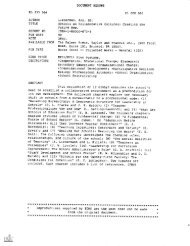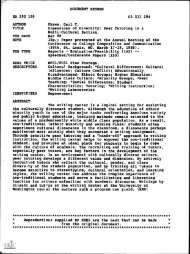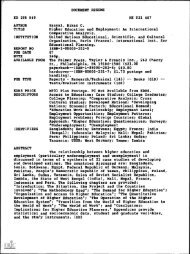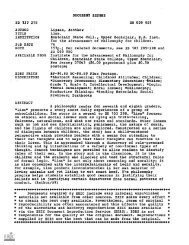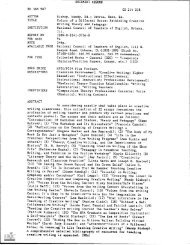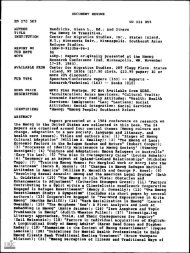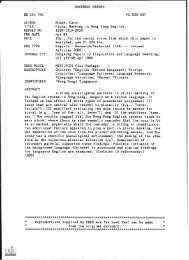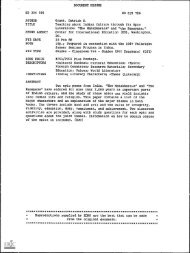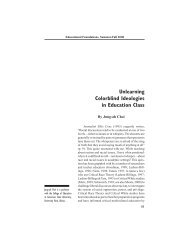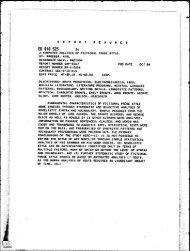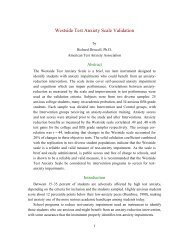Prison Literacy: Implications for Program and Assessment Policy.
Prison Literacy: Implications for Program and Assessment Policy.
Prison Literacy: Implications for Program and Assessment Policy.
Create successful ePaper yourself
Turn your PDF publications into a flip-book with our unique Google optimized e-Paper software.
educators. In states where other ethnic groups, e.g., vorious Asian-Americans who are not native speakers of English are statisticallysignificant in prisonse.g., Hawaii, 44.4%, Cali<strong>for</strong>nia, 4.8 %; <strong>and</strong>Colorado, Nevada, Utah, <strong>and</strong> the federal system (all above 2%)prison educators are required who can teach effectively in amulticultural environment, even though the smaller numbers poseless of a problem than does the growing number of Hispanics(Camp & Camp, 1990, p. 5; Dillingham, 1991, p. 66).Following the lead of New Mexico <strong>and</strong> Texas, the federal systembegan to address the bilingual needs of its Hispanic residents in1973 when a study revealed that about 18.5% of the total federalinmate population had Spanish surnames, but only 2.5% of thefederal staff was bicultural or bilingual (McCollum, 1978).Thereafter, Cali<strong>for</strong>nia <strong>and</strong> New York initiated programs in bilingual<strong>and</strong> bicultural education (Hamilton, 1985; Castro, 1977, 1981;Hispanic Inmate Needs, 1986).2The Texas D.O.C. guide <strong>for</strong> teaching illiterate <strong>and</strong> non-Englishspeakinginmates provides a recommendation <strong>for</strong> anindividualized approach in the use of proficiency tests <strong>for</strong>identifying an inmate's needs (Brown, 1973). In both New York <strong>and</strong>New Jersey, as is also the case with African-Americans, the failure ofpublic-school education to help Hispanics achieve full literacy hasbeen cited as a contributive factor to their criminal behavior(Sainz & Biggins, 1979). In a Connecticut prison where theauthorities <strong>and</strong> most of the inmates all spoke English, the radioprograms were all in English, <strong>and</strong> the loud-speaker invariably gavecomm<strong>and</strong>s in English, the Spanish-speaking Puerto Riquetiosviewed themselves as symbolically imprisoned by the Englishlanguage (Pinton, 1978). In view of the increasing numbers <strong>and</strong>diversity of incarcerated Hispanics from all over Latin Americaduring the 1980s, we found research <strong>and</strong> reporting on the progressof bilingual education in prison to be especially meager.4. N ATIVE-AMERICANSWhereas bilingual education of non-native-English speakers ismerely inadequate, <strong>and</strong> the prison education of African-Americansis an agony, the educational situation of Native-American inmatesis a human tragedy <strong>and</strong> quite consistent with the immigrantAmerican's historic antipathy towards the encountered native.Whereas the Native-American population at well under two millionis but 0.6-to-0.7% of our total population, Native-Americans werereported to be 3.8% of the total prison inmate population in 1990(Camp & Camp, 1990, p. 5). Proportionally speaking, Native-12 TECHNICAL REPORT TR93-124



